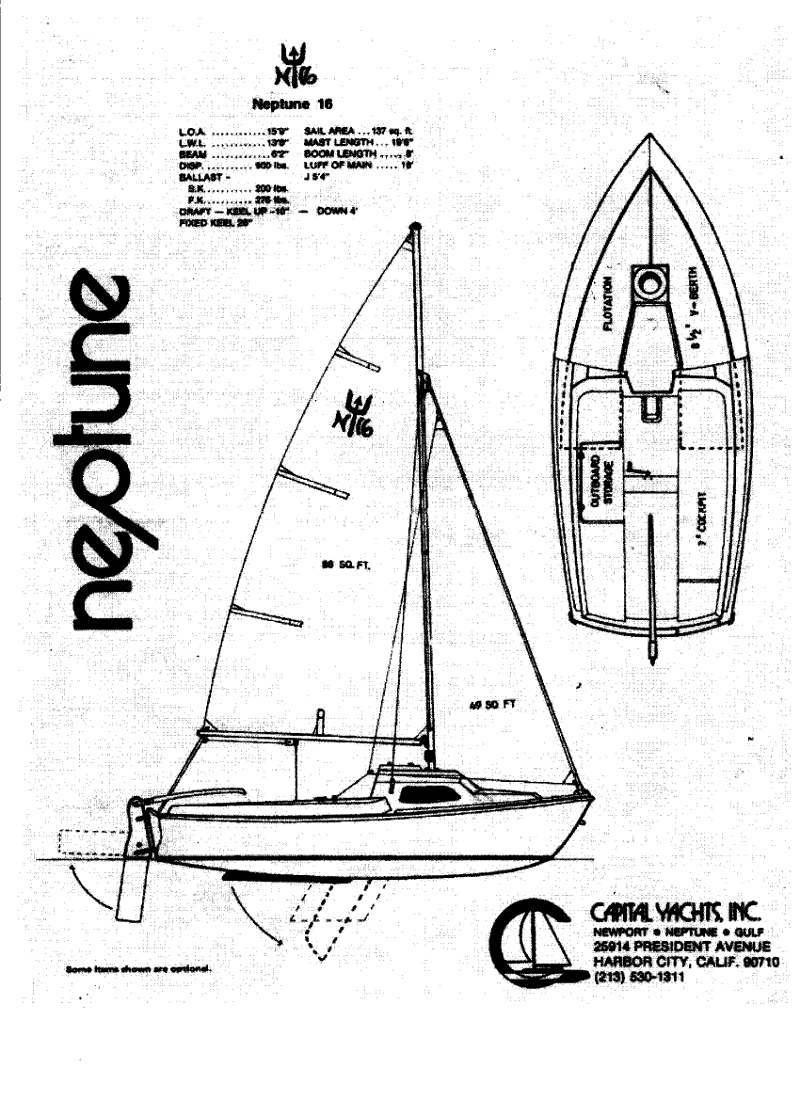|
Neptune 16 I sold my Weekender back in August and was lazily cruising Craigslist, looking for a small, fiberglass sailboat to use for adventuring. I came across an ad for a Neptune 16, located up in Vancouver WA. As soon as I saw the ad, I knew I was going to buy the boat. It was fate.
Neptune/Newport/Glouchester 16s have it all: Swing keel, dry cabin, and most importantly, comfortable quarter berths for sleeping and enough storage space for outfitting for a decently long sail.
Philip was the owner - he is a boat man, through and through. In his garage shop, he has a beer fridge.
Sorry for the crappy picture, but Philip has come to the realization I did a year or so ago: Building models instead of full-sized boats. The Neptune wasn't in the shop, but I knew it was going to be an excellent boat just by talking to Philip and seeing the level of attention he pays to his hobbies.
And there she is, a glorious example of the Neptune design. She'd got a few dings and dangs, but in general, she is in much finer shape than the Newport I'd owned years ago. Here's the biggest problem - the keel was broken. The bit on the right is ~140lbs of lead. Just a big oval in cross section. The bit on the right is about ~40lbs of lead stuck to ~24lbs of aluminum plate. I need to either figure out a way to weld it all back together or just build a new keel. I don't really want a 200lbs keel. I think I'd be happier with a 60lbs keel. I understand the physics and I think I have a good read on why the keel is so damn heavy to start with, but I want to do a little experimentation.
The papers Philip gave me when I bought the boat included a properly scaled drawing of the keel. I'm going to see if I can make a new one. The aluminum plate that makes up the upper part of the keel is 3/4" thick and shaped. The first step on the road to restoration is to get the lead off the aluminum part so I can get some accurate measurements. The lead had snapped right where the aluminum stopped. At first I thought maybe I could melt the lead off the aluminum. That little corner is the result of about 1/2 hour's attempt at melting with a torch. I will, eventually, need to melt the lead so I can reshape it, but today is not the day. Next, I tried chiseling it off using a 3/4" wide cold chisel and a 16oz hammer. That went about as well as trying to melt it with a torch. The solution was a rusty axe head and a 3lbs sledge. Those clever bastards at Capitol Yachts, Inc. really didn't want the lead to come off - they had several through holes to make sure the lead stayed put, but there are very few problems in this world that can't be solved with a 3lbs sledge hammer. Sing it with me: Bang! Bang! Andy's heavy hammer came down upon the lead!" Thor on Loki's skull? Channeling an enthusiastic Brokkr? It took about an hour of serious whacking to get to this point. and about 5 minutes to get here. Properly applied force and all that. Now comes question time. What to replace the keel with? (With what to replace the keel?) Easiest, fastest, cheapest and heaviest would be to simply figure out how to re-pour the original keel. Not that hard, though I've never tried to pour anything near this big. The result would be an as-designed, 200lbs keel. More costly would be to have a new keel made of aluminum, very rough calculations have it at a little more than 40lbs - that's just a 3/4" sheet shaped into a NCAA foil, no big blobby bit on the bottom. Without the weight, the boat's center of gravity would rise by as much as 4-6", and that's a lot. Another option is to pay someone to make me a steel keel in a 3/4" sheet. Rough calculations on this option hs the keel coming out at over 130lbs. OK, so that's it for the first step.
|





